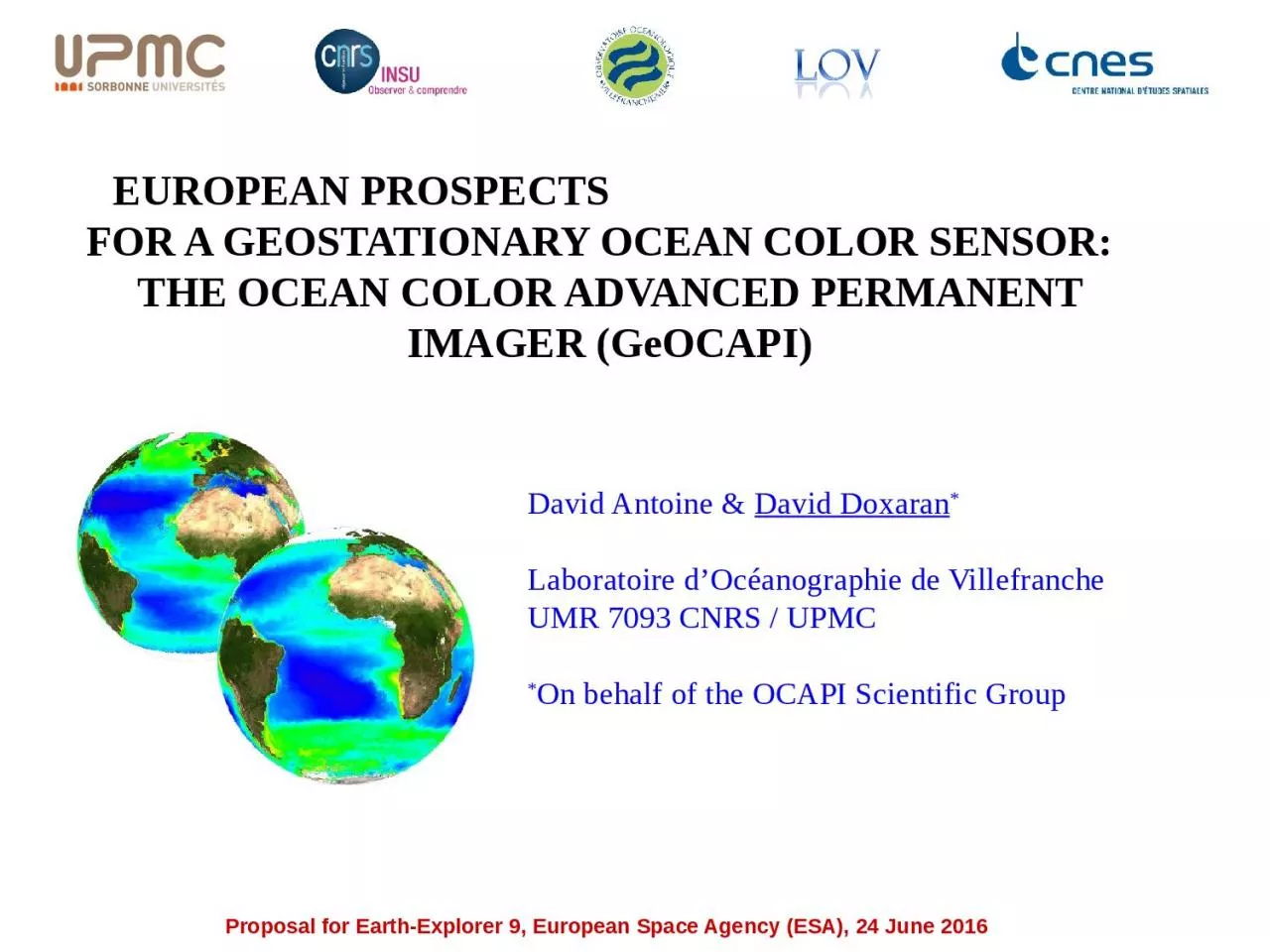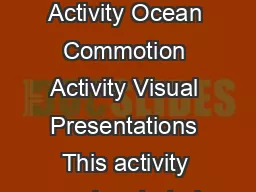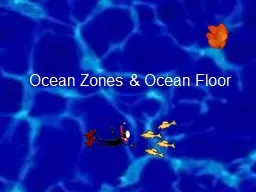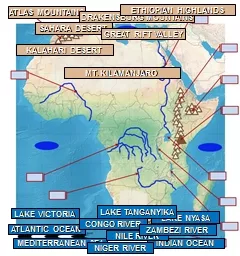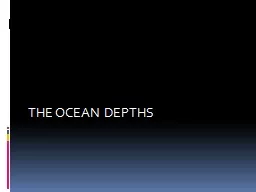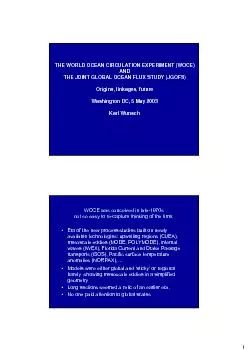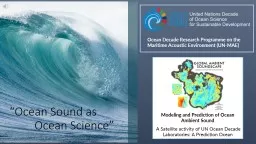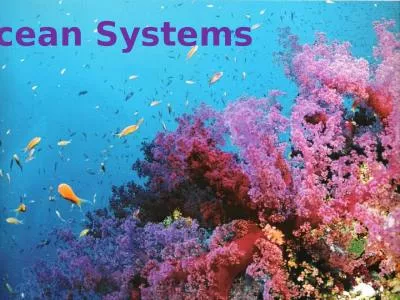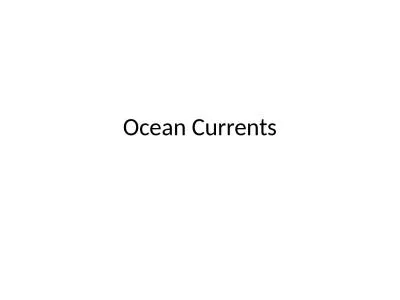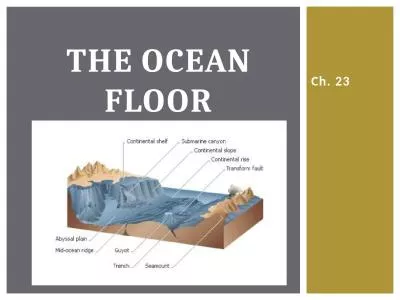PPT-EUROPEAN PROSPECTS FOR A GEOSTATIONARY
Author : adah | Published Date : 2023-10-29
GeOCAPI Proposal for Earth Explorer 9 European Space Agency ESA 24 June 2016 David Antoine amp David Doxaran Laboratoire dOcéanographie de Villefranche
Presentation Embed Code
Download Presentation
Download Presentation The PPT/PDF document "EUROPEAN PROSPECTS ..." is the property of its rightful owner. Permission is granted to download and print the materials on this website for personal, non-commercial use only, and to display it on your personal computer provided you do not modify the materials and that you retain all copyright notices contained in the materials. By downloading content from our website, you accept the terms of this agreement.
EUROPEAN PROSPECTS FOR A GEOSTATIONARY: Transcript
Download Rules Of Document
"EUROPEAN PROSPECTS FOR A GEOSTATIONARY"The content belongs to its owner. You may download and print it for personal use, without modification, and keep all copyright notices. By downloading, you agree to these terms.
Related Documents

